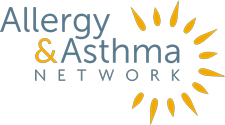Asthma and food allergy symptoms often overlap. Respiratory symptoms that are common to asthma – coughing, wheezing and shortness of breath – are also common in food-induced anaphylaxis, a life-threatening allergic reaction.
Here’s what you need to know:
- Studies show 35-50 percent of people with food allergy have asthma. It’s suspected there are many people with asthma who don’t know they have a food allergy.
- People diagnosed with asthma and food allergy are at higher risk of anaphylaxis than those with just food allergies.
- Adolescents and young adults with both asthma and food allergy face a higher risk of death from anaphylaxis. Eighty percent of life-ending episodes due to food allergy occur in people between 15-30 years of age. This may be due to risk-taking behavior common in that age group, hormones, or a reluctance to carry epinephrine auto-injectors – the first line of treatment for anaphylaxis. The key message for parents is to help children understand their asthma and food allergy so that when they are older, they know how to self-manage their condition.
- If you’re not sure if symptoms indicate an asthma flare or anaphylaxis, use an epinephrine auto-injector first and then use a quick-relief inhaler if needed. Any person diagnosed with asthma and food allergies should carry a quick-relief inhaler and a twin-pack of epinephrine auto-injectors with them at all times.

 810304 Eaton Place, Suite 100
810304 Eaton Place, Suite 100